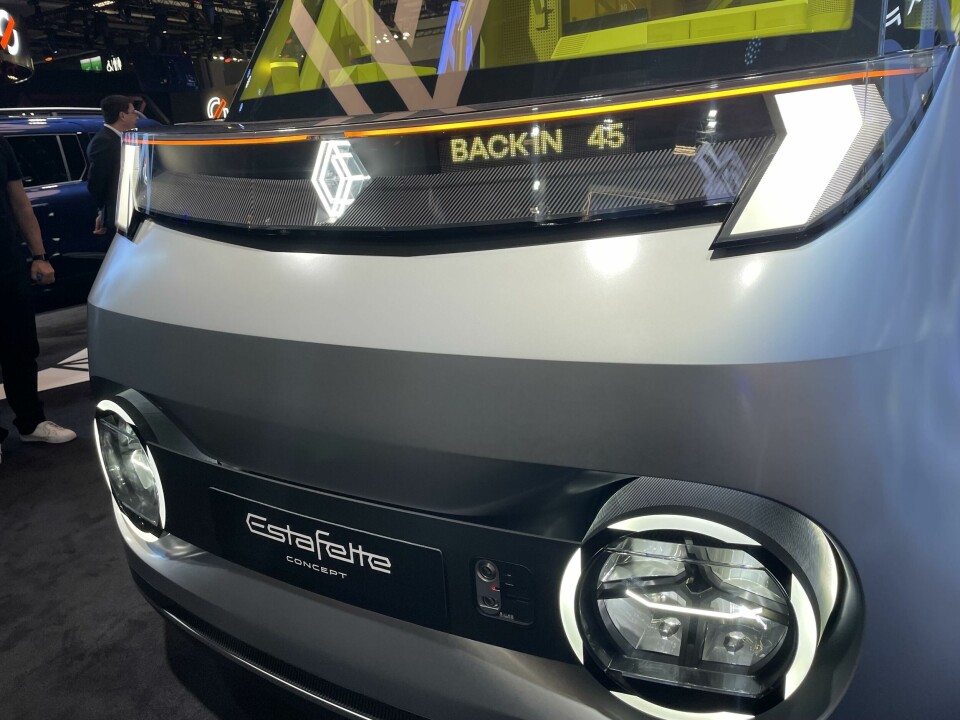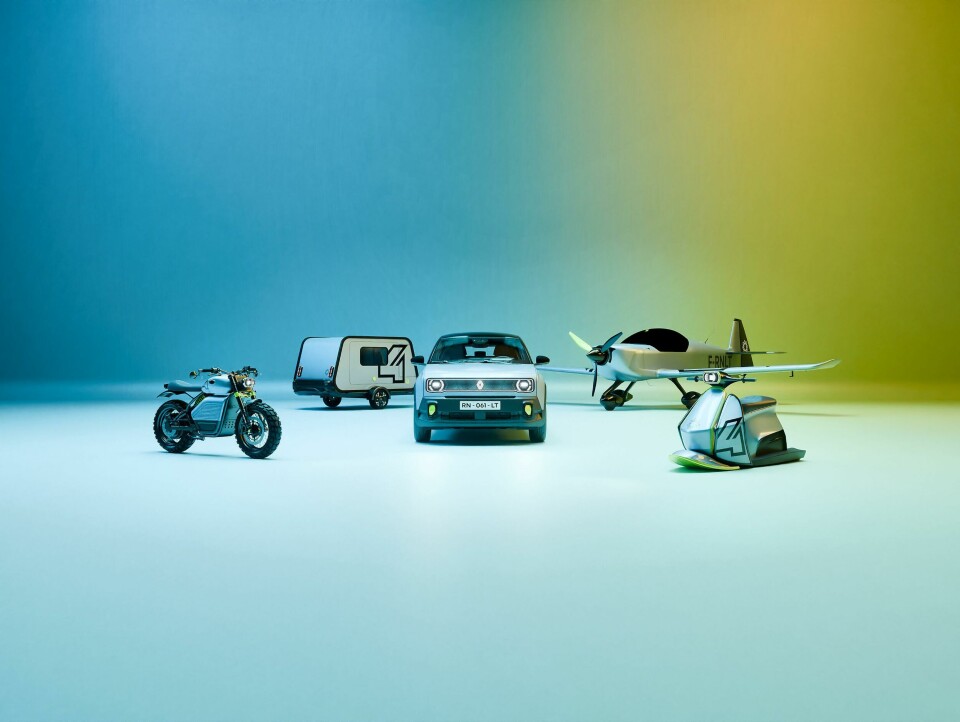
Renault was the standout of the 2024 Paris Motor Show – but no need for Fl4wer Power
In a surprise to nobody, Renault arguably had the most impressive stand at the 2024 Paris Motor Show, displaying a raft of concepts and upcoming production models on home turf. Guy Bird reports on the French brand’s presence this year, which was a real mixed bag – not in the figurative sense – but in the sheer range of models on display, from small city cars to commercial delivery vans
Renault 4
The launch of the all-electric Renault 4 production car was arguably the biggest news at the 2024 Paris Motor Show press day – with multiple models across the mobbed French stand, to open and close and press and prod. But perhaps there were almost too many 4s.
Alongside other car launches from Renault – including the Emblème concept we’ll talk about separately and the R17 reimagined by Ora ïto – it was hard to view any individual vehicle with space to spare. Or indeed for more than a few seconds, before some video crew or rival journalist got in the way. As a veteran of motor shows, I know how it goes some times, but a more spacious stand design with fewer cars might have helped.
Anyway, Renault will be happy that the 4 was getting a lot of attention, and its designers deserve praise for making it clearly part of the Renault family while some other new brands at the show barely managed a distinct identity of their own. But from concept to production, the car you’ll be able to buy – which sits at the top-end of the B-segment at 4140mm long between the shorter Clio and longer Captur – is a duller fish compared to the wilder and more pumped-up 2022 4Ever Trophy concept (and also at first sight, compared to the production Renault 5 too).
The front face with round headlights integrated into a lozenge-shaped ‘grille’ provides the visual nod to the late-60s version of the 4 – although the new one has more pleasingly veiled eyes – and there are further references to various iterations of the original: in the ‘rear quarter light’ window pane on each side, a retractable canvas roof and the pronounced horizontal lower body side strakes, which visually echo the added safety cladding on 70s and 80s models.
On the inside, from a practical point of view, the front passenger seat can fold flat for longer loads – like good vans-with-windows have offered for decades – while 420 litres of storage and 249 miles of electric range is decent for the segment. The dash looks the same as the new 5, with a joined-up twin driver cluster and driver-angled centre screen, although a few colour and trim options did catch the eye, including houndstooth-style black and white fabric in the door cards.
Less convincing was the clumsily named ‘Fl4wer Power concept’, also on the Renault stand among all the other 4s. The ‘safety yellow’ front mask and black-painted steel wheels were interesting takes on possible future exterior customisation options for the 4, but the interior’s flowery upholstery mélange looked rushed, a bit off-brand and a bit rubbish.

In another hall, there were further lifestyle transport accessories for the 4, in the shape of a short-range electric plane, camping trailer, motorbike and even water scooter. These which looked much more convincing and coherent and also have real-world (French) start-up companies behind them. The 4 is a decent follow-up to the 5 then, but the message at the show felt a bit muddied by over-exposure and add-ons.
Renault Emblème concept
While the Renault 4 grabbed most of the headlines on the French automaker’s cramped 2024 Paris Motor Show stand, tucked in among the numerous 4s and 5s was an all-new concept called the Emblème. The intriguingly handsome 4800mm long and 1520mm high shooting brake was unveiled with some fanfare by CEO Luca de Meo as a design which could reduce CO2 emissions by 90% across its lifecycle when compared to an equivalent car today (or from from 50 tonnes to five, cradle to grave).
An all-electric powertrain with a small 40kW battery and a range-extending hydrogen fuel cell for longer journeys sits underneath that shapely exterior while a raft of aerodynamic exterior elements – from rear-view cameras unusually housed in the wheelarches, flush door handles and windscreen wipers concealed under the bonnet – all help reduce drag. Careful use of sustainable materials on the interior will also help – although unhelpfully the interior wasn’t on show in Paris, which made the concept less convincing.
When looked at closely, the Emblème’s deeply scalloped body sides also had blocked off vents, but according to Sandeep Bhambra, chief designer, Renault advanced design, those vents will be real (and properly holey) on the production vehicle. When that might car come is still unofficial, but de Meo ended his announcement by adding: “You know me, when I show something on stage, I try to bring it to market. But I can’t say when.”
Alpine A390β
A 2024 Paris concept which did show an interior – and a very dramatic one – was the Alpine A390β fastback. CDN had a chance to speak with design director Antony Villain, while waiting for French president Macron’s visiting entourage to pass by and he explained that the fastback’s exterior was pretty much faithful to the production EV due in 2025 (the press release says 85%) and would use the same platform as the Scenic with a similar wheelbase, but lower.
Villain so confirmed what we knew all along: that the cabin was way more conceptual. But what a cabin! With a crystal cave-cum-sci-fi hang-out theme, the A390β interior had some very unusual touches. Recycled carbon crystal ‘spikes’ line the floor horizontally from front to back, while the wraparound front seats’ headrests feature see-through shells with bio-sourced elastomer for padding. 3D-printed by Erpro Group, the honeycomb-like structure is made partly from castor seed and is shaped to provide more ‘give’ and comfort than it might appear from a distance, Villain assures.
Renault Estafette concept
An unlikely showstopper at Paris was a new van concept called Estafette from Renault. First show last month at the IAA Transportation show in Hanover, Germany, seeing the van up close in France was a joy and a revelation.
Aside from the striking mono-colour yellow driver-centric dashboard and jokey “Back in 45” digital messages running ticker-tape style across its bonnet, the innovative concept package has a more serious purpose in showing how a delivery driver could work differently.
The idea is that the operator loads the van from the back before setting off and then keeps that rolling shutter-style door down and secure during the day while picking deliveries from the load area via the walk-through cabin. Those goods can then exit the van and reach their destination via a sliding side door.
The Estafette is also high enough for a six-foot plus person to stand up straight in that space, to reduce day-to-day delivery strains from bending and stretching. Best of all, the electric van is due to make production – alas without the zingy yellow interior which would be hellish hard to keep clean – within two years.






















































